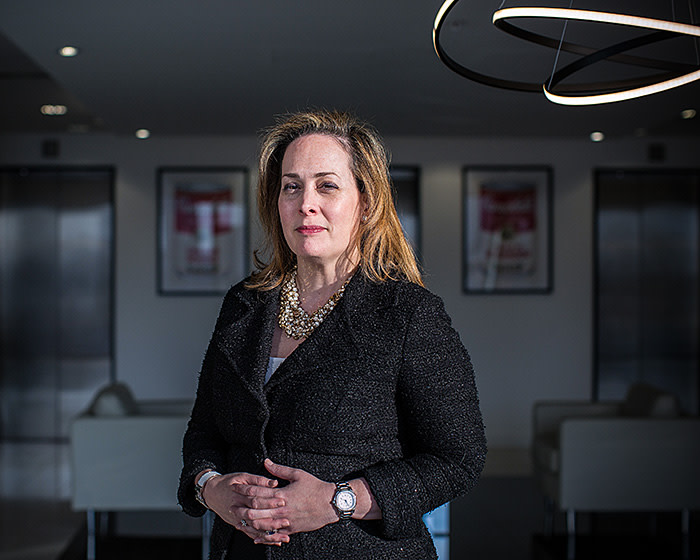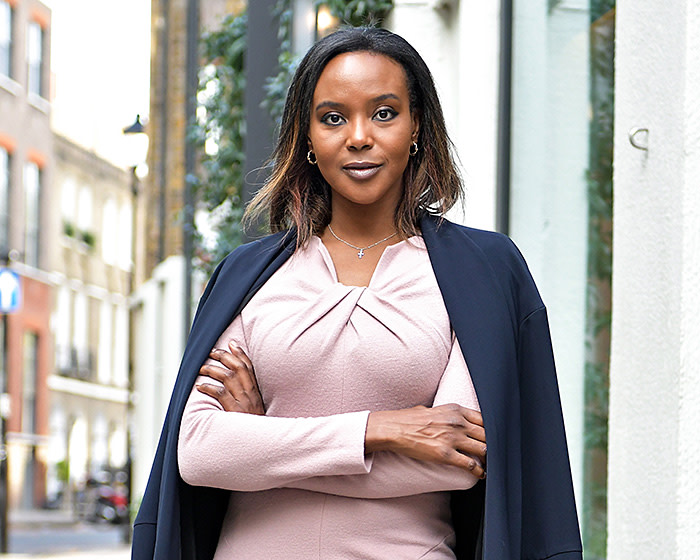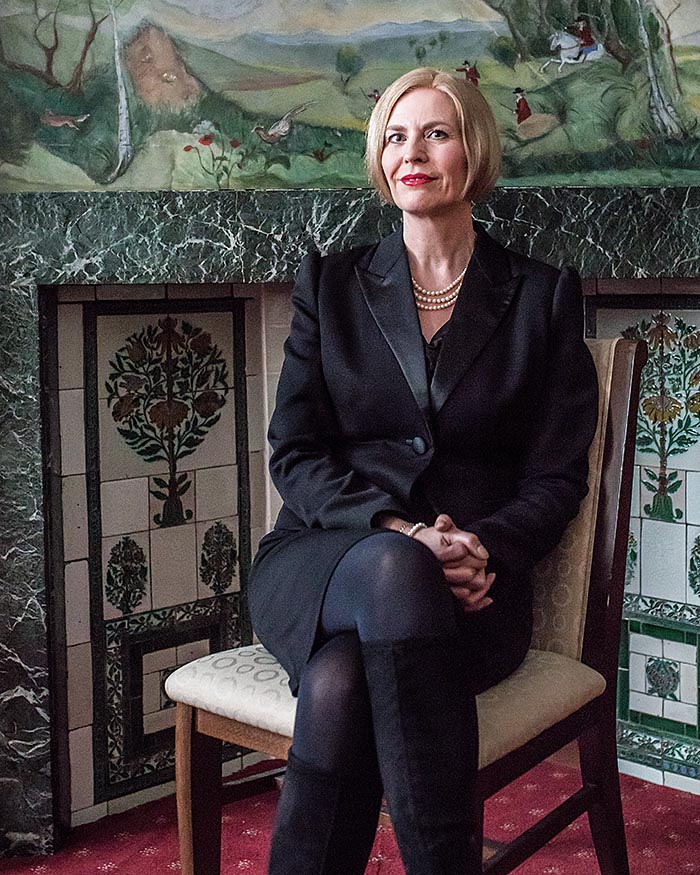Legal profession must break its glass ceiling
Roula Khalaf, Editor of the FT, selects her favourite stories in this weekly newsletter.
For his summing up, Lord Justice Phillimore was in little doubt: “There has never been a suggestion that the office of attorney was one which was open to a woman,” he wrote.
More than a century has passed since the case of Bebb v Law Society in 1913, when the UK’s Court of Appeal upheld the Law Society’s ban on women working as lawyers.
Gwyneth Bebb, who gave her name to the case, and three other women who brought the challenge were not deemed to qualify as “people” under the 1843 Solicitors Act. After the first world war, however, attitudes had changed: the barrier to women becoming lawyers was removed in 1919 with the passing of the Sex Disqualification (Removal) Act.
Neither Phillimore nor Bebb would recognise the legal sector today, in Britain or elsewhere. According to figures from the Law Society, which promotes and supports solicitors in England and Wales, women account for 60 per cent of newly qualified and nearly half of all solicitors. More than two-thirds of law students are female.
Other statistics paint a less positive picture. They depict a profession that welcomes women as pupils and trainees and gives them opportunities to progress, but only so far.
The proportion of female partners in the top 10 UK law firms is 18 per cent, according to a 2017 survey by professional services firm PwC — and only 19 per cent in the next 15 firms.
The story is not much better among barristers and judges. Data for 2017 from the Bar Council, the professional association for barristers in England and Wales, show there were 1,409 male self-employed silks — top barristers — and only 254 female equivalents. As for judges, 22 per cent in the High Court are women, a figure that rises to 24 per cent in the Court of Appeal.
The situation is mirrored in the US, the world’s biggest legal market. Only 18 per cent of equity partners in private practice are women, according to the American Bar Association. In the Fortune 500 — the largest US industrial corporations, listed by revenue — women make up only a quarter of general counsel.
Bebb might not have used the phrase “glass ceiling” but she would certainly have recognised the phenomenon. The question for the legal profession is how to break it.
Ask any law firm if it has a diversity programme or an inclusive culture and the answer is invariably “yes”. There is a difference, however, between “tick-the-box” diversity and “impact” diversity, says Michal Berkner, a partner at the US firm Cooley, based in London.

“What moves the needle? Having role models — actually promoting the women who do stay on, to partners, management and leadership roles,” she says.
“It is about recognising their talent and making them visible. For that, you need senior attorneys sponsoring junior women and making sure the talented ones progress up the career ladder.”
One possible solution in organisations across the globe has been to set targets and quotas. Not all female lawyers support this, because they do not want to be regarded as token female partners — the ones who made it to partner level on the strength of their chromosomes. Others say targets are the main reason behind the gains of the past few decades and that some form of compulsion is necessary if law firms are to improve their record.
“Without positive action — a defined goal and a number within a timeframe — nothing happens,” says Funke Abimbola, general counsel and head of financial compliance at pharmaceutical company Roche UK, and an equality and diversity campaigner. “I’ve seen a notable shift [in numbers] since targets and quotas were being set by law firms.”
A big part of the problem in private practice is the career structure. Having to rise through the ranks, from trainee to newly qualified lawyer to associate, means that for many women the leap into partnership coincides with the prospect of starting a family. Along with the punishing hours — and the occasional all-nighter — the thought of prolonging one’s career and having children at the same time can seem daunting.

Ms Abimbola puts the case differently, by listing the obstacles to career progression one by one.
They are the result, she says, of: bad management on the part of senior lawyers; cultural aversion to agile working; reluctance on the part of women to promote themselves; fear among male lawyers of leaving the office early to pick up children from school; a combination of all of the above.
“We hear a lot about what drives the long-hours culture, the deadlines, and so on,” she notes. “Yes, there are deadlines with hard targets but they are few and far between.”
Ms Abimbola also dismisses a tendency among senior partners to blame the client. “A partner said to me, ‘well, clients are very demanding, it’s all the clients’ fault’. I fundamentally disagree. When I worked in private practice, I saw poor project management on the part of the partner and the fear they would lose a client. But it takes a lot to move a client — and one who leaves on a whim is not worth having anyway.”
Ms Berkner believes that clients could be the most effective pressure point. “If all the clients of law firms said, ‘you’d better be diverse or we won’t hire you’, the next day the numbers would double,” she says.
Roberta Liebenberg, a senior partner at Philadelphia firm Fine, Kaplan and Black, agrees. “Clients are where the impetus will come from. If clients demand that law firms reflect the diversity they require because it is important to their shareholders and customers, that will really move the needle.”
A former chair of the American Bar Association’s Commission on Women in the Profession, Ms Liebenberg adds: “We don’t need tokens — we need a critical mass. We need women as first-chair trial lawyers, leading deals, leading firms, and getting compensation that is commensurate with male colleagues’ ”.
Yet almost everyone sees change — in the US, the UK and elsewhere. Jennie Gubbins, senior partner at Trowers & Hamlins, and one of nine women to hold such a position across the UK’s leading 200 law firms, says: “There has been real progress over my career and it is accelerating and will continue. When I took over as senior partner I was one of the few . . . Now it has become more normal, even in the [five years] since then.”

Ms Liebenberg also points to a big opportunity on the horizon for female lawyers in the US if firms get their succession planning right: “There are 400,000 baby boomer lawyers set to retire in the next 10 years. This will open up a tremendous amount of business women could inherit, which would catapult them forward in their careers.”
What would Bebb’s assessment have been? “She would be incredibly proud of the women who followed her,” says Christina Blacklaws, incoming president of the Law Society.
“Women are thriving and breaking new ground in all areas of our profession,” Ms Blacklaws adds. “What we want is for ordinary hard-working women to do as well as ordinary hard-working men, not just the stellar women. Then we’ll have true equality.”
Comments